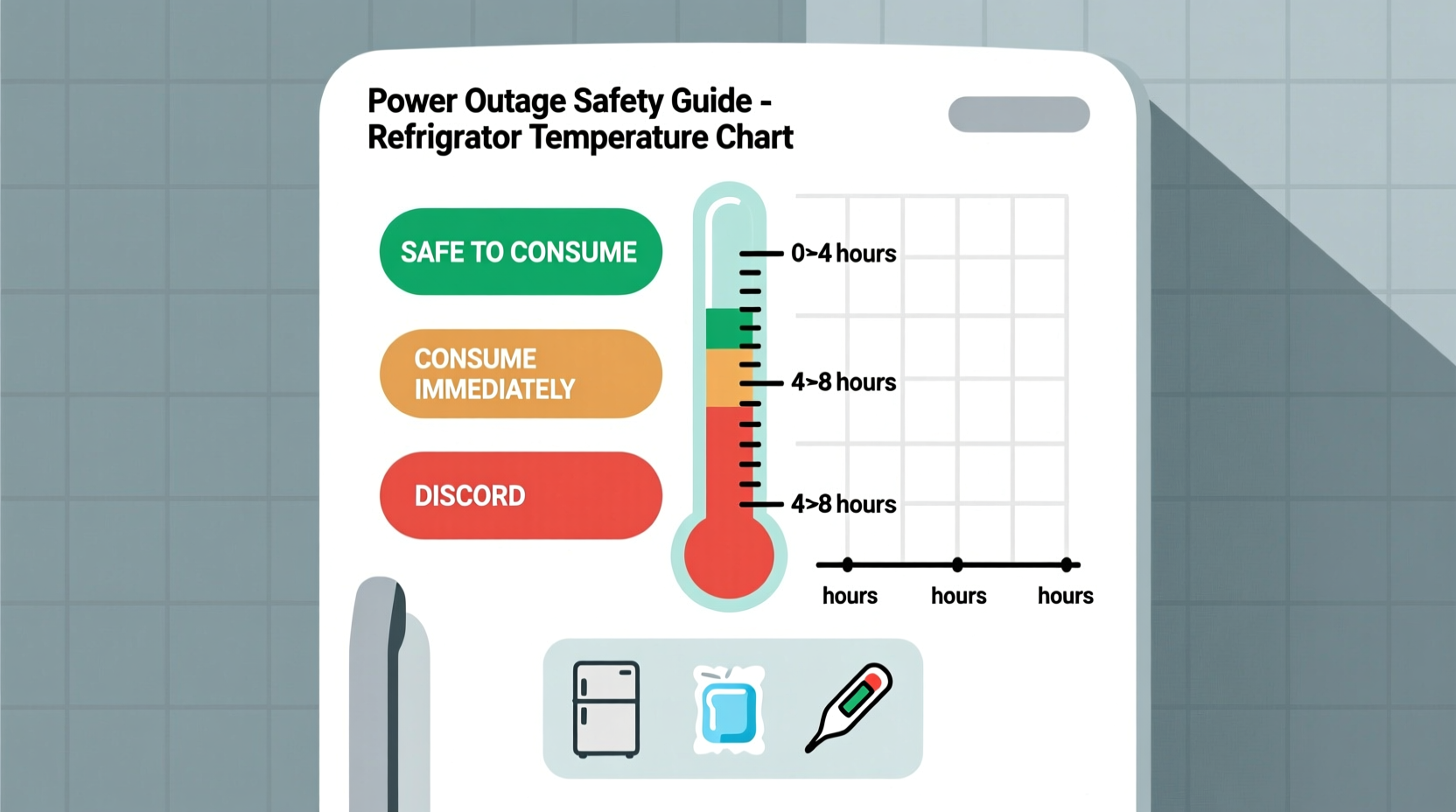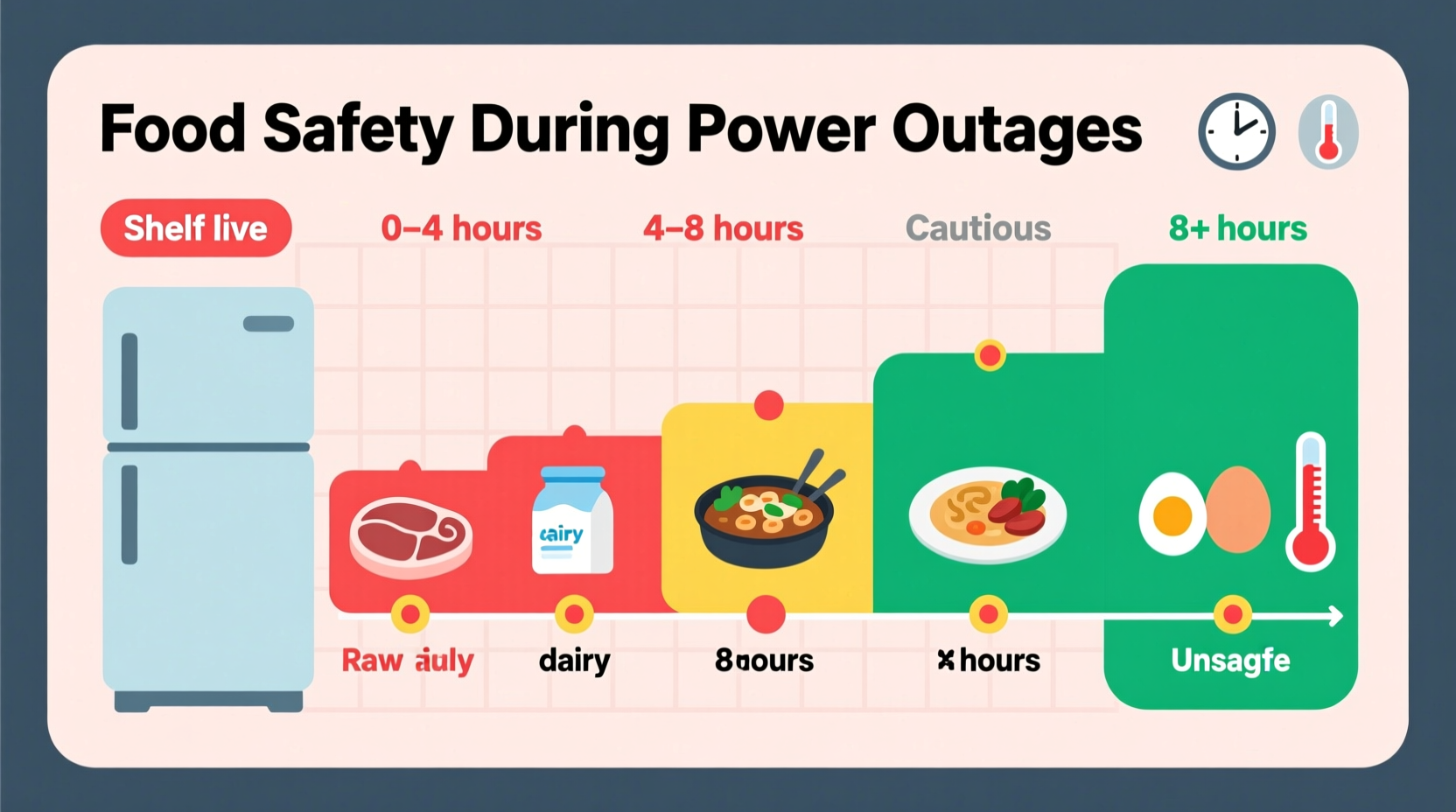When the power goes out unexpectedly, one of your immediate concerns should be food safety. Understanding exactly how long is food good in the refrigerator without power can prevent foodborne illness while minimizing unnecessary waste. This guide provides evidence-based timeframes and practical assessment methods so you can make informed decisions during power outages.
The Critical First Hours: What Happens Immediately After Power Loss
When electricity stops flowing to your refrigerator, the internal temperature begins rising immediately. The USDA's Food Safety and Inspection Service confirms that perishable food remains safe for about 4 hours if you keep the refrigerator door closed. Each time you open the door, cold air escapes, accelerating temperature rise.
Initial refrigerator temperature significantly impacts your safety window. A properly functioning refrigerator maintains 40°F (4°C) or below. If your unit was operating at this optimal temperature when power failed, you have the full 4-hour safety window. Fridges running warmer than 40°F before the outage have a reduced safety period.
| Food Category | Safe Without Power (Door Closed) | Immediate Danger Zone |
|---|---|---|
| Raw meat/poultry | Up to 4 hours | Above 40°F for 2+ hours |
| Dairy products | Up to 4 hours | Above 40°F for 2+ hours |
| Cut fruits/vegetables | Up to 4 hours | Above 40°F for 2+ hours |
| Leftovers | Up to 4 hours | Above 40°F for 2+ hours |
| Opened baby formula | Up to 1 hour | Above 40°F |
This CDC food safety chart shows critical timeframes for different food categories. Notice that opened baby formula has the shortest safety window, while most perishables share the standard 4-hour guideline. The "Immediate Danger Zone" column indicates when food enters the temperature range where bacteria multiply rapidly (40°F-140°F).
How to Accurately Assess Food Safety After Power Restoration
When power returns, don't automatically assume all food is safe or unsafe. Follow these evidence-based assessment methods:
- Temperature check: Use a food thermometer to verify internal temperatures. Discard any food reaching 40°F or higher for 2 hours or more
- Visual inspection: Look for unusual discoloration, mold growth, or slimy textures
- Smell test: Trust your nose—spoilage often produces sour or putrid odors
- Texture evaluation: Check for unexpected softening or sliminess, particularly in meats and dairy
Remember that some dangerous bacteria like Staphylococcus aureus don't produce noticeable odors or visual changes. When in doubt about how long is food good in the refrigerator without power, follow the USDA's "when in doubt, throw it out" principle.

Maximizing Your Food Safety Window: Practical Strategies
Several factors can extend or reduce your 4-hour safety window. Understanding these variables helps you make better decisions during outages:
- Refrigerator fullness: A full refrigerator maintains cold temperatures longer than a half-empty one. Consider using water bottles to fill empty space when storing less food
- Door opening frequency: Each 20-second door opening raises internal temperature by 30°F. Designate one person to minimize unnecessary checks
- Initial temperature: Fridges running at optimal 35-38°F provide a larger safety buffer than those at 40°F
- External conditions: Ambient room temperature affects cooling loss rate—outages during summer heat reduce safety windows
For those wondering how long can food stay in fridge without power before spoiling, these contextual factors determine whether your specific situation aligns with the standard 4-hour guideline or requires more conservative estimates.
When Power Returns: Safe Recovery Protocol
Restoring power doesn't automatically make your refrigerator safe. Follow this sequence:
- Check food temperatures before restarting the refrigerator
- Discard questionable items first to prevent cross-contamination
- Allow the refrigerator to reach 40°F or below before returning food
- Wipe down shelves and drawers with a sanitizing solution
- Monitor temperatures for 24 hours to ensure proper operation
Never refreeze food that has completely thawed and reached room temperature. The USDA confirms that refreezing partially thawed food is safe if ice crystals remain and the temperature hasn't exceeded 40°F.
Preparing for Future Outages: Smart Prevention Strategies
Reduce food waste during future power disruptions with these practical preparations:
- Keep appliance thermometers in both refrigerator and freezer for accurate monitoring
- Organize your refrigerator with high-risk items (dairy, meat) at the back where temperatures stay more stable
- Consider backup power solutions like generators for extended outages
- Download the USDA FoodKeeper app for instant food safety guidance during emergencies
- Learn how to safely use dry ice (25 pounds keeps an 18-cubic-foot freezer cold for 3-4 days)
Understanding refrigerator food safety after power outage helps you balance safety with resource conservation. Remember that these guidelines apply to standard household refrigeration units—commercial units may have different safety parameters.
How long does food stay safe in the refrigerator during a power outage if I never open the door?
Food remains safe for approximately 4 hours when the refrigerator door remains completely closed during a power outage, according to USDA guidelines. This timeframe assumes your refrigerator was operating at the proper temperature (40°F or below) before the outage occurred.
Can I tell if food is safe after a power outage just by smelling it?
No, you cannot reliably determine food safety by smell alone. Some dangerous bacteria like Staphylococcus aureus don't produce noticeable odors. Always use a food thermometer to check if items reached 40°F or higher for 2+ hours, and when in doubt, follow the USDA's "when in doubt, throw it out" principle.
How long will a full freezer keep food safe without power?
A full freezer will keep food safe for approximately 2 days during a power outage if the door remains closed. A half-full freezer maintains safe temperatures for about 1 day. The more full your freezer is, the longer it will stay cold because the frozen items help maintain the temperature.
What should I do with food that reached 45°F during a 3-hour power outage?
Discard perishable foods that reached 45°F for more than 2 hours. The USDA considers food unsafe when held between 40-140°F for over 2 hours. This includes meat, poultry, dairy products, eggs, and cooked leftovers. When temperatures exceed 90°F, the safety window reduces to just 1 hour.
Does keeping food in the original packaging affect safety during power outages?
Original packaging can provide some insulation, but doesn't significantly extend the 4-hour safety window. Vacuum-sealed packages may maintain safety slightly longer than opened containers, but temperature remains the critical factor. Always check internal food temperature rather than relying on packaging.











 浙公网安备
33010002000092号
浙公网安备
33010002000092号 浙B2-20120091-4
浙B2-20120091-4